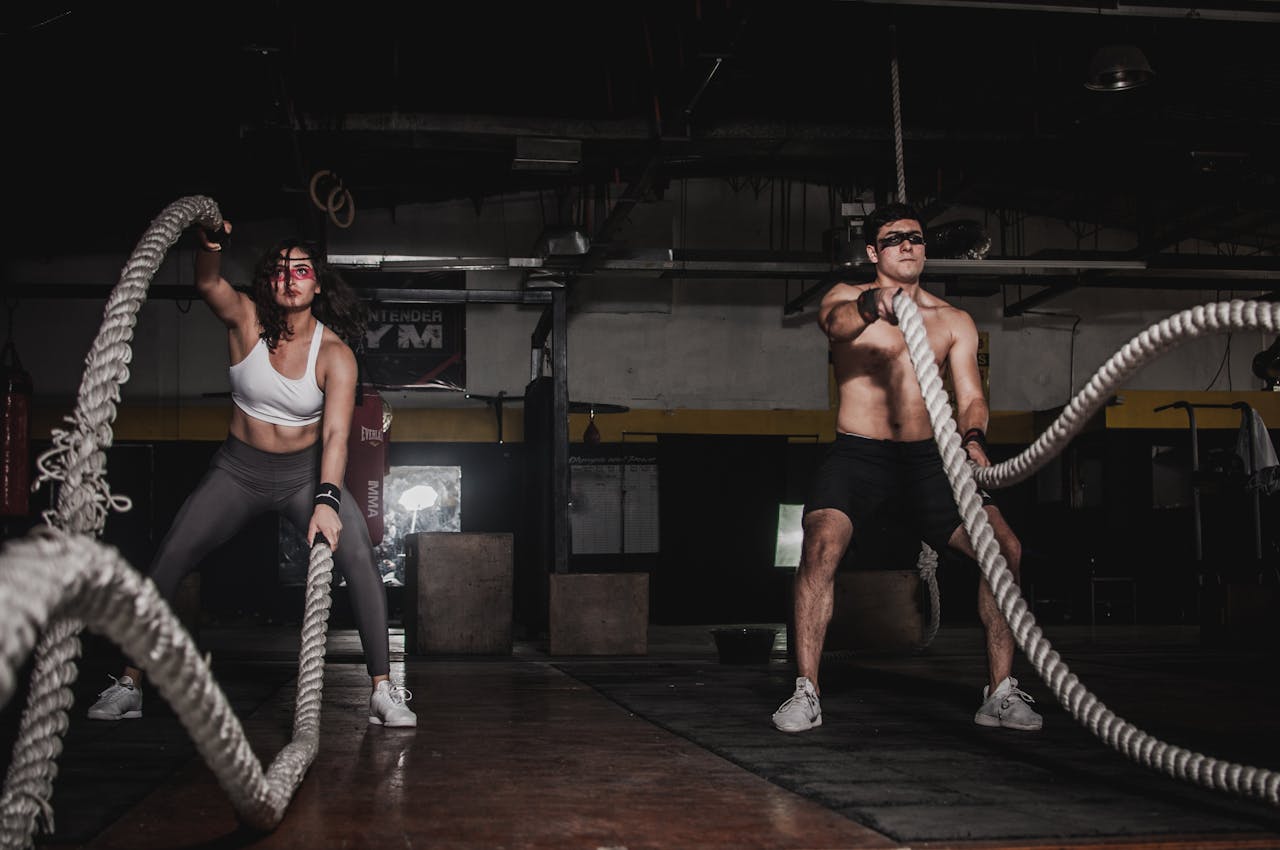
How to Exercise Without Getting Hurt
Anyone who’s read my articles for a while or has sought my counsel on how to lose weight and increase your quality of life knows I believe physical activity is one of the surest pathways to achieving a positive outcome.
Exercise means something different to me now than it did 30 years ago.
Thirty years ago, I didn’t exercise as much as I trained. That’s because I was an athlete and needed to be in top condition to excel in my sport.
Now, I exercise so I feel good all the time.
That’s why I recommend that other people exercise, too.
What I also know to be true is that many people who hear me advocate for increasing physical activity have at one time or another tried to move more and, as a result, ended up getting hurt in the process.
Injury is part of exercise, especially when working out at the upper end of your physical limitations or when you’ve gone into a routine without dialing in the fundamentals.
What I wanted to do today is give you some advice on how to maintain a healthy lifestyle based on movement as a foundation while avoiding injury and enhancing recovery in the process
The truth is that you can exercise injury-free and feel great. I’ll show you how.
Key Ways to Ensure You Don’t Get Hurt and Recover Well
The beauty of exercise is that you can engage in any number of activities to help reach your movement goals.
That could be swimming, rock climbing, hiking, shooting a bow and arrow, and so much more.
What you do is entirely up to you.
That being said, some activities have a higher risk profile for injury than others. Activities like powerlifting or basketball are far more likely to create injury than riding a stationary bike or doing yoga.
Nonetheless, it’s good to approach any activity with the confidence that you won’t get hurt and can recover for the next training session.
Here are some of the best ways to ensure you feel good before, during, and after.
1. Stay Hydrated:
Believe it or not, hydration is critically important to injury prevention and recovery.
Hydration is crucial for preventing injuries and facilitating recovery by supporting several key physiological mechanisms.
Hydrating helps you maintain synovial fluid production, which lubricates and cushions joints, reducing friction and wear.
Proper hydration ensures electrolyte balance, essential for optimal muscle function and flexibility, preventing cramps and muscle strains.
It also aids in temperature regulation through sweating, preventing heat-related injuries.
Adequate water intake maintains blood volume for efficient nutrient and oxygen transport, which is essential during physical exertion to reduce fatigue and prevent injury.
Additionally, hydration facilitates the removal of metabolic byproducts like lactic acid, reducing muscle soreness and aiding recovery. It supports cellular processes vital for tissue repair by aiding nutrient transport and metabolism, which are crucial for healing.
To optimize these benefits, it's important to hydrate before, during, and after exercise, utilizing water or electrolyte-rich drinks to maintain fluid balance and enhance recovery.
2 - Get a Proper Warm-Up and Cool Down
Our muscles, tendons, ligaments, and skeletal system tend to “tighten up” as we age. As well as when we’re inactive for even a few hours.
And so it’s often best to make sure you give your body a chance to loosen up so that nothing is damaged. A proper warm-up increases blood flow and raises muscle temperature, enhancing elasticity and reducing stiffness, which prepares muscles and joints for exertion.
On top of that, a warm-up will activate the nervous system, improving coordination and reducing the risk of injury by promoting optimal movement patterns.
Warming up isn’t hard, either. Spending 5-10 minutes on light aerobic exercises like walking or cycling to increase your heart rate and blood flow to your muscles, along with dynamic stretches that mimic the movements of your activity, are enough to help reduce the risk of injury.
After your workout, take 5-10 minutes to cool down.
Many people neglect this part of exercise, but it’s really important. Cooling down helps gradually return the heart rate to baseline and facilitates the removal of metabolic byproducts like lactic acid. Stretching during cool-down helps with flexibility and reduces muscle stiffness while promoting tissue repair by maintaining blood flow to fatigued muscles, which helps with faster recovery and minimizes injury risk.
3 - Prioritize Strength Training and Flexibility:
Say, for instance, you really like pickleball (as many people do); you may think that’s all you need to do to stay active.
And while I’d say it’s not a bad theory, incorporating strength training 2-3 times a week will help you enjoy it for longer and give you an edge over your opponents.
Strength training boosts muscle and joint stability, which helps prevent injuries by supporting proper body mechanics.
And, of course, it helps to improve flexibility and joint range of motion, which help to decrease muscle tension and enhance overall function, making your body less susceptible to injuries.
4. Incorporate Rest and Recovery Days
One of the traps of living an active lifestyle is the belief that you always need to be working.
On social media, there are hashtags like #nodays off.
As a physician, I don’t support that ethic.
Rest and recovery days are crucial for preventing injury and ensuring long-term success.
Rest may seem counterproductive, but resting allows muscles, nerves, and connective tissues time to repair and regenerate, reducing the risk of overuse injuries.
Research from the Mayo Clinic shows that one rest day per week promotes blood circulation, helping transport nutrients to muscles, removing metabolic waste, and helping accelerate recovery. They’re also helpful for improving muscle flexibility and joint mobility
One thing a lot of people don’t do is listen to their bodies and rest as needed. Yes, scheduled rest days are OK, but pay attention to your body's signals—fatigue and pain may indicate the need for additional rest. Ensure quality sleep, as it is during rest that growth hormones essential for muscle recovery are released. Pair this with proper hydration and nutrition to provide the necessary building blocks for effective recovery.
5 - Cross Train
Cross-training isn’t complicated. It’s just doing a different activity than the main activity you’ve committed to.
An easy example is if you’re a runner, consider something like swimming. Alternately, it could be varying intensity. So if you walk a lot, maybe jog. And if you jog a lot, sprint here and there.
Cross-training helps you build up different muscle groups. Imagine how much stronger you can get by doing more than just your usual routine. You’ll get better at your main exercise of choice and improve your overall strength and coordination.
Cross-training also breaks up the routine, which helps to keep you excited about working out. That excitement can boost your focus and help you perform better when it's time to return to your chosen activity.
Additionally, cross-training can be made into active recovery, which is doing low-intensity exercise to help your body heal. Activities like yoga or an easy swim can help reduce soreness because they improve circulation and help eliminate muscle byproducts that make you ache.
A research article from the "Journal of Athletic Training" points out that cross-training boosts overall performance and reduces injury risks (American College of Sports Medicine, 2014). So, by mixing things up, you'll stay on top of your game and lower your chances of getting hurt.
6. Utilize Proper Equipment and Techniques
I’d be willing to bet that many of the injuries people suffer when exercising result from not utilizing the correct technique or the right equipment.
Equipment is a pretty easy aspect of injury prevention.
But technique is even more important. You can have all the right gear, but doing the exercises you’ve committed incorrectly opens you up to a world of hurt.
Proper technique is important because it ensures your body is aligned correctly, minimizing strain on muscles, ligaments, and joints.
For example, in weightlifting, maintaining a straight back and engaging the core prevents undue stress on the spine, significantly lowering the risk of back injuries.
Or in HIIT (high intensity interval training) exercise regimens that incorporate running, being sure to strike more on the ball of the foot is better than heel striking. It will help you get more work done while lowering the risk of injury.
Also, focusing on technique encourages mindfulness and body awareness, which can enhance the overall exercise experience and help prevent overexertion.
Getting exercise-specific equipment will also help reduce the risk of injury, as trying to use something not meant for a particular exercise is like trying to fit a square peg into a round hole.
Take These Things Into Consideration
The truth is you really do need to exercise.
You don’t have to go crazy doing it, but you do need to be careful.
Injury prevention is incredibly important to work into your daily/weekly regimen to prolong the length of time you can work out. So borrow a few tips from here to get the most that you can out of the workouts you end up completing…and intend to complete.



